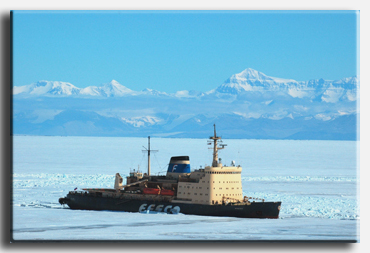Icebreakers

The fuel tanker Maersk Peary approaches McMurdo Station ice pier, escorted by the U.S. Coast Guard (USCG) icebreaker Polar Star in January 2014. (NSF photo by Peter Rejcek.)
A Polar-class, America's most powerful icebreaker, operates annually in the Antarctic. The USCG Polar Star deploys to Antarctica to break a channel through McMurdo Sound and perform other logistics tasks. Glacier, an icebreaker built in 1955, served in Antarctica almost every year until it was decommissioned in 1987. The older Wind-class icebreakers served in Antarctica until the 1979-1980 season.
A Polar-class icebreaker is 122 meters long and displaces 13,400 metric tons. Its diesel engines provide 13,400 kilowatts for normal operations. When required for icebreaking, gas turbines can be operated to increase the power to nearly 45,000 kilowatts. In open water the ship cruises at 13 knots; maximum speed is 17 knots. The ship carries two helicopters. Crew size is 154; the ship can accommodate 20 scientists.
Recently, the National Science Foundation has also leased commerical icebreakers to help with channel breaking and tending operations.

Under contract to the U.S. Antarctic Program, Russian icebreaker Krasin opens a channel in McMurdo Sound. (NSF photo by Eric Hobday.)
